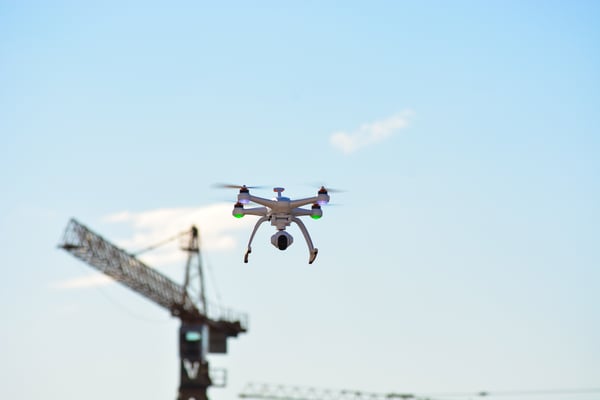
The holidays are now over and the latest wave of hobby drones have been unwrapped, filling the skies as we speak. Thousands of relative novices are now in control of unmanned aircraft systems (UAS) across densely populated suburbs and cities. All that amateurish swooping may invariably lead to a few cracked windows and severe injuries. Subsequently, insurance inquiries are increasing.
Not only amateurs and recreational users, but commercial UAS applications are also in high demand—and concerned about possible damages. Given their wide ranging applications, from photography to agriculture, humanitarian aid to search and rescue, the high flying machines are becoming increasingly popular across industries. And as inventors and business visionaries get more creative, uses for drones are expected to get even more diverse and grow in sales. Because of this, there’s been a mounting concern from corporations and entities regarding insurance for commercial drone operations.
Here are the top five things to understand about the risks associated with commercial drone usage (before the liability claims start flying).
Why should I get my drone insured?
Most commercial insurance policies exclude aviation coverages, including those for drone operators. Drone operators may not consider what they are doing to be dangerous, yet they could be exposed to legal action if property is damaged or people are injured.
This is why having insurance is so crucial. In the result of an accident, UAS operators will need the support of a trusted insurance provider. Ultimately, it’s a small cost, considering that the livelihood and reputation of the insured parties are at stake. Additionally, if you or your business operate UAS, your customers will likely expect you to have liability coverage before they hire you.
What is drone insurance?
Drone insurance acts similarly to most other insurance policies. If you find yourself in an accident or with a lost drone, the provider will cover your damage and liability costs to a degree. Based on the number of accidents that seem to happen with drones, it is recommended you protect yourself with liability insurance and protect your investment with damage insurance.
While the FAA hasn’t explicitly mentioned insurance requirements, any commercial UAS operator should assume that their customers and business partners will ultimately require them to certify that they are insured. Nonetheless, we anticipate that most professional drone operators will want to obtain insurance for legal liability and to protect their assets.
How much does UAS insurance cost?
Insurance for UAS applications is not all that expensive for a commercial policy. Drone insurance policies are typically broken up into two different parts: liability and damage. The average cost of a commercial drone policy for many of the most popular models, and covering up to $1 million liability, ranges from $600 - $1,550.00 per year in premiums. However, you will need to get a unique quote from an insurance company to know exactly how much you will be covered and exactly what it will cost.
What does a UAS insurance policy typically cover? How much coverage do I need?
At minimum, a UAS operator should consider legal liability insurance. It will cover the general cost of property repair or injuries. Coverage against physical damage to the UAS system itself is also available. This covers the expense of repair equipment and the total loss of the platform or ground equipment.
The amount of coverage that you’ll need depends on several factors, such as your business, your customers and your assets. The film industry, for instance, may require higher insurance coverage; and insurance requirements may differ if your customers tend to be smaller business or major corporations.
How do I get my drone insured?
First, you will need to obtain quotes from multiple companies and decide which one you want to purchase. To get a quote, go to an insurance company’s website, then find and complete the “get a quote” form.
When putting together your application, you’ll want to have certain information handy. The insurance provider wants to see things like the amount of training you’ve completed, the number of hours you have flown, the areas you’ll be operating in, if you have any certificates (i.e. 333 exemption), proof of maintenance and if you’ve had any previous history of accidents or loss. These specifics all come into play when they’re considering your premiums and if they will cover you.
Once you’ve received multiple quotes, you can compare prices and coverage. This will help you decide which company is offering you the best deal. They will then guide you through the rest of the procedure.
Insuring your drone is a relatively new concept, but it is fast becoming an essential step for successful commercial drone operators. When all's said and done, all serious UAS pilots should have insurance. It’s a strong indicator to your business prospects that you’re professional and reliable.
Simulyze’s Operational Intelligence (OI) platform delivers unprecedented data insight and management to commercial unmanned operations. It also provides the data that insurance companies need to help them set accurate drone insurance rates.
Contact us today to schedule a demo and to learn more about Simulyze’s OI technology that is helping to further accelerate the commercial UAS timeline while ensuring safety throughout our skies.
DroneBlog


